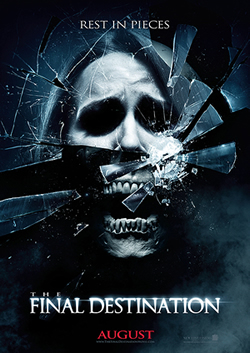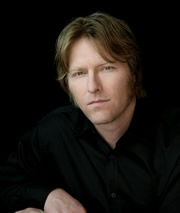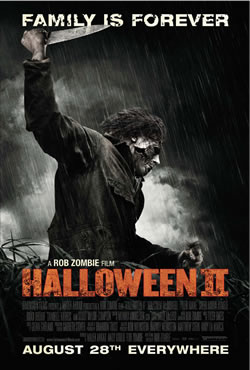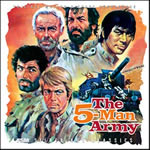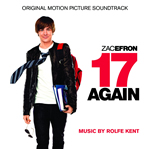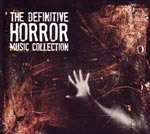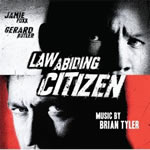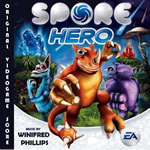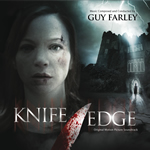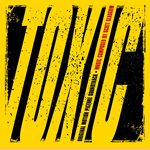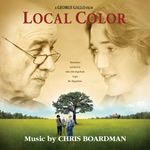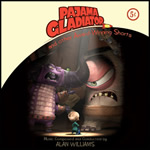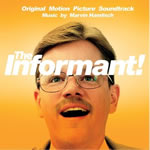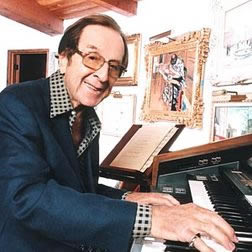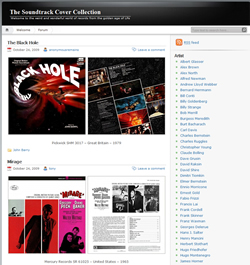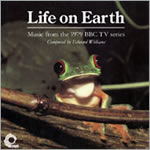 |
Soundtrax: Episode 2009-11
November 9th, 2009By Randall D. Larson
Brian Tyler A Tale of Two Tylers
Two of this season’s pre-Halloween shockers featured notably spooky scores by notable composers, both of whom have risen to the A-list in recent years with significant and effective scores for major feature films in many genres. Revisiting the horror film – where both Brian Tyler and Tyler Bates have their film musical roots – and finding new means to accommodate the spooky-scary, is the subject of this week’s pair of short interviews.
1: Brian Tyler on The Final Destination
Brian Tyler scored the fourth film in the Final Destination franchise [see my review in my Sep. 28th. column), supporting the film’s action, sense of fantastique, and brutal, violent shocks with a potent mix of ambient atmospheres and progressive, driving propulsion, from the blistering rock and roll of the main theme to the omnipresent chills provided by somber, sustained string chords and relentless chase motifs. Tyler has incorporating Shirley Walker's main theme from the first three films, which gives the new score a proper sense of connection to the first three, while he also has derived a musical dynamic that both reflected the legacy of the series while providing something new to this excursion.
Q: What brought you into The Final Destination and what input did the filmmakers have about the kind of music you were to write?
Brian Tyler: I was brought on very early in the process by New Line Cinema, Warner Brothers, and the director David Ellis. They were still filming the movie and called me from the set and asked me if I was interested. We talked about the concept even in that original conversation. We all wanted to respect the tradition of what Shirley had established but also bring its own flavor and grit to this particular film.
Q: What were your first impressions of what the film needed musically to support its action, fantasy, and horrific elements?
Brian Tyler: I thought there were some dueling aspects of the film that needed addressing. There was the fate aspect of the film that feels supernatural. But of course the propulsive action of these premonition sequences needed musical muscle. It was a fine balance to be sure. And yes, horror was a large part of this score but in a way, not straight up horror since there is no visible killer. In fact, the main character of the film is never seen. Death himself! So it was up to me to provide the voice of death through the music.
Q: Your score ties in with the previous films by incorporating Shirley Walker’s theme – how did you integrate and develop the old with the new in this score – and arrive at something new and unique?
Brian Tyler: Shirley’s theme is still the most prominent aspect of the score. There were a few other themes that I composed for this film. One was an upward death motif that only needed a small statement to recognize something was very, very wrong in a scene and about to get worse. Also there is a new danger theme for the most evil moments in the film. Also, there had to be a more emotional and natural theme to the score for the struggles of one of the main characters with his past.
Q: Horror scores – in fact, film music in general – are by nature manipulative: intensifying emotions, anticipating events about to occur on screen, generating heightened excitement in the viewer. To what extent do you feel a score like this needs to drive the roller coaster of spooky/scary/shocky and to what extent does it hang on, nudging the viewer/listener as they anticipate those drops and curves? (i.e., when do you propel them ferociously, and when do you finesse the story more subtly?)
Brian Tyler: It’s so tricky. Sometimes the music would lead you down a path of “something is coming” and sometimes it would lead you down the path of “everything is okay” right before the movie hits you with a hard right to the jaw. It’s all about finding the right moment for the right tone. I just go by feel and try to remember how I feel when I see a scary film that really really got me.
Q: The hybrid nature of contemporary film scores – the mix of synths with symphs – have become the norm for modern action films and horror thrillers. How do you work within this (expected?) palette to create something that is in your own voice and affords the opportunity to make a new musical statement in a score like this?
Brian Tyler: Well the hybrid style is certainly present now. I think it depends on the feel of the film. There are films that I score that are purely orchestral of course. I love their purity. But I always try to make hybrid scores natural. The non orchestral elements mostly come from instruments that I record with a microphone. The more I can record live the happier I am!
Tyler Bates 2: Tyler Bates on Halloween II
Tyler Bats’ score for director Rob Zombie’s re-imagining of John Carpenter's Halloween II (see review in my August 28th column), which picks up where Zombie’s 2007 Halloween remake left off, once again revisits the classic John Carpenter theme from the original film, but only for a moment before delving headlong into even darker and distressing musical landscapes. This is horror music of the sound-design variety, bleak and vicious, with unusual percussive electronic effects, heavy chords of synth and horn, and processed choral effects abound, creating a nightmarish tonality that is thoroughly unsettling.Q: What has changed in your approach to the Halloween story between the first remake and this new score? What lessons or considerations from the first score have you brought into this new embodiment of the reinvented franchise?
Tyler Bates: It was difficult trying to adapt the classic John Carpenter themes into the context of Rob’s filmmaking style. The nature of those classic themes works really well with an inhuman and sometimes robotic “bogeyman” type character, but in Rob’s films Michael Myers is humanized, which calls for a broader musical palate than the design of the original film. I reworked John Carpenter’s classic theme for Rob’s initial presentation to the studio when he decided to do the first of the two movies, which came together pretty naturally, but when I actually began scoring to picture, the two did not coexist very naturally. In the new film we decided to do more of our own thing instead of being reliant on the classic themes as much as the first film. This enabled me to really expand the sonic and melodic scope of the film. I think the end result is a movie that really feels like a Rob Zombie film through and through.
Q: The new score is thick with dissonance and disharmony. What was your process of creating Halloween II’s dark and disturbing musical textures and sound design?
Tyler Bates: You know, it’s all music to me. Like each of my projects, I try to expand the sonic palate on each of Rob’s films. I this case, my primary goal was to create new ways of sonically unsettling an audience. At this point I am probably not a very good judge of what is scary, which can happen after scoring as many deaths as I have! Nonetheless, I approached this score with the knowledge that we would be more reliant on original motifs as opposed to the classic Halloween themes, so it freed me up melodically, and also provided the opportunity to implement different rhythms that aren’t particularly characteristic of the classic themes we all associate with Michael Myers. Having done the previous film with Rob, I had two years to think about the things I wish that I had done. At the end of the day, I was able to address some of them.
Q: The Halloween II score is bleak, barely a respite exists between its omnipresent relentlessness. What was your process of characterizing Michael Myers and his unstoppable presence through your music in this score?Tyler Bates: You said it: “relentless.” That sums this movie up in many ways. Rob really wanted to imbue this movie with an underlying emotional current. There is quite of bit of “head space” music in this film, which is where the emphasis on emotion is most apparent.
Q: What direction did Rob give you in this score? How closely did he involve himself in this score, and how much input did he give you on what he wanted?Tyler Bates: Rob and I had a lengthy discussion about the movie before production began. The music process started with working up the new version of “Love Hurts,” which is in the end credits crawl. It served as an inspiration piece for Rob. The editor, Glenn Garland, sent cut footage to me during principal photography, and I wrote music for every scene that came my way. By the time Rob was done filming, the new music served as the temp score for the entire film. From there, Rob experimented with placing various cues in different spots of the film, then sending me a new cut of the movie to show me exactly how the music worked in the context of scenes I had not scene to that point. This was an unusual process for us, but Rob wanted to edit the film on the east coast for a change of scenery. I continued to work on music as the film took shape, then Rob and I finally got together about a month ago to finalize the cues in the film. It was hectic but also fun.
Tyler Bates: The most challenging aspect for me is to do better than the last one. I don’t think that is a challenge to overcome. Some degree of dissatisfaction with your previous projects is a healthy motivational tool for doing your best work.
Q: What was most challenging about this score for you? How did you overcome that?
New Soundtrax in Review
One of FSM’s Silver Age Classics for October is an expanded reissue of a classic Ennio Morricone Italian Western score – 1969’s The Five Man Army (Un Esercito di Cinque Uomini). About a group of bandits, led by Peter Graves, who plan on robbing a train transporting gold for the Mexican army, Morricone provided an exciting score built around an effervescent heroic, melodic main theme full of the kind of whistles, harmonica, Jews’ harp, coyote howls, and orchestral rhythms that made his scores to A Fistful of Dollars and The Good, The Bad, And The Ugly so effective. Secondary themes include a wistful, pastoral melody for French horn that seems to comment on the end of the wild west as encroaching civilization is beginning to obscure it (“Cinque Amici, Cinque Eroi”), and an anthemic lament (“Muerte, Donde Vas?”) that both illustrates the unfortunate peasants’ abuse at the hands of the Spanish soldiers as well as their eventual victory of their abusers. Originally released as an 8-cue Ariete LP in 1969 and reissued on Duse in 1977, the Duse LP, paired with 8 tracks from Morricone’s Extrasensorial (aka Link), was reissued on CD by Duse in 1994, and by Beat in 2001. However the tracks were mastered at the wrong speed – an error corrected in FSM’s new release, which includes the complete score, with numerous intriguing variations on the main themes, in a welcome 25-track album preserved from a 35mm mono mix of the music, plus the only extant stereo version of the main title theme, originally presented on Morricone’s I Western LP compilation in 1983. The result is a splendid hourlong revelation of this score in excellent if mostly monaural sonic quality. A riveting score in many ways, the listening experience is much benefitted by John Bender’s analytical album notes, supplemented by a valuable track-by-track commentary by Alexander Kaplan.
A pair of romantic comedy scores by Rolfe Kent have been released by Silva Screen, both enjoyably tuneful and heart-felt scores. While Verve has released the songtrack album of Mark Waters’ Ghosts of Girlfriends Past with an almost identical cover, Silva has preserved Kent’s musical score, comprising 24 short tracks (43 mins). Kent provides a punchy groove that emanates from the aggressive sparring exhibited early on by the main characters, Connor and Jenny and provides a fine verve that captures the outer and inner nuances of these complicated characters. Additional themes, including a softer love theme for the pair, a motif for Connor and his confidante brother, and an ectoplasmically mischievous motif for the ghostly Uncle Wayne, which gives way to the large scaled set piece, “Conjuring the Ghost of Future” which gives the comedy film much of its sobering dramatic edge. The score is melodically attractive and compelling in its approach and musical texture, and has plenty of heart while supporting the film’s tons in both its light and dark emphasis.
Silva’s score soundtrack to Burr Steers’ 17 Again (the songtrack album with nearly identical cover is out on New Line; the score album reaches 37 minutes and 23 tracks), latest fantasy comedy in the venerable Big/Freaky Friday subgenre of Body Swap Movies, in which an distressed and harried husband wishes he was 17 again (meaning, 20 years ago when he used to be 17; but instead simply becomes 17 years old in his present environment). Kent emphasizes the fantasy aspects of the film through a powerful orchestral/choral motif in “Mike Realizes,” but otherwise, as with the film, keeps the score sufficiently grounded. Thematically and acoustically rich, the 17 Again score is tunefully melodic, breezy and fun, but also poignant in places. Even a track like “Sex Ed” provides a heartfelt melody rather than a comic-based routine that might have been called for. The approach focuses on character rather than antics, and the score helps keep Mike’s character grounded in sympathetic reality despite his body swap. Both of these scores are affecting and effective; for one reason or another, Kent has favored (or been favored with) romantic comedy scores the last few years (Sideways, Wedding Crashers, Sex and Death 101, etc.), but he’s kept them fresh and interesting and always honest and heartfelt. So it is with these two, with thanks to Silva for preserving the scores apart from the songdriven albums released initially.
Silva Screen’s new compilation release, The Definitive Horror Collection, provides an 87-year shuffle through the historical annals of horror film music, presented across four discs in descending order, from 2009 to 1922 (well, sort of. See below). It’s a good collection and is mostly well recorded by the various orchestras, ensembles, or individuals who faithfully replicate the original material in excellent digital sound (although the age of many of the recordings, most of which go back to 2001’s compilation, A History of Horror, and further, show some inconsistencies in performance in some of the earlier recorded material); at the same time it’s an inconsistent compilation, and far from truly “definitive” in terms of what scores really have shaped the genre, filmusically. The label’s interpretation of “horror” is loosely applied in order to bring it some entries out of left field – John Murphy’s music to Sunshine, for example, isn’t horror but science fiction (albeit a masterful score); the instrumental version of George Thorogood’s “Bad to the Bone” from John Carpenter’s Christine doesn’t belong because it’s not film music – it’s a pop song that was included in the film; ditto Mike Oldfield’s “Tubular Bells” from The Exorcist, although at least it sounds filmmusical. Zodiac is not a horror film but a procedural police drama based on historical accounts. TV’s Dexter is not truly a horror show but a crime comedy-thriller based on horrific concepts. For that matter, King Kong is not truly horror but fantasy. Ditto Pan’s Labyrinth. And any collection of horror music that purports to be “definitive” yet contains nothing by Hans Salter or Herman Stein or anything from the Universal monster movie catalog (save Waxman’s oft-collected “Creation of the Female Monster” from Bride Of Frankenstein), nor nothing from j-horror or Mexican or other species of significantly notable horror cinema is far from truly “definitive.” We do have 1922’s Nosferatu included but only via James Bernard’s [excellent] 1997 rescore – which was not the music heard in the original release of the film and so technically we have no film music earlier than 1935. This is essentially a library compilation, culled from what already exists in Silva’s vast library of rerecorded film music (originally developed for other compilations over the years), supplemented by a few notable new recordings including Christopher Young’s Drag Me To Hell, Carter Burwell’s Twilight, Charlie Clouser’s Saw, and Johan Söderqvist’s Let The Right One In, all of which are excellent performances and excellent examples of modern horror music. That said, it’s a likable collection and a great listen, but it’s just mistitled. I am aware I am quibbling over vernacular; but the album, purports to be what it is not. That rant out of the way, I will admit that as a compilation of some notable examples of horror film music over 74 years of cinema history, powerfully arranged, nicely recorded and presented with superlative sound, this is a very likable collection that serves as potent re-visitation of horror film music focusing on the ‘70s onward. Just don’t expect it to represent a truly definitive selection of historical horror film musical milestones.
Album producer Rick James has addressed some of my concerns in an informative interview about the process of compiling this album, posted at:
http://www.examiner.com/x-12873-Soundtracks-Examiner~y2009m10d23-Silva-Screen-releases-ultimate-Halloween-soundtrack-box-set--The-Definitive-Horror-Music-Collection
Brian Tyler’s latest score, for F. Gary Gray’s compelling drama, Law Abiding Citizen, has been released on iTunes and Amazon MP3 by Downtown Music (also as a “CD On-Demand” from Amazon). For this film, which is about an average Joe who takes justice into his own hands after a plea bargain sets his family’s killers free, Tyler has energized the psychology of the main character, played by Gerard Butler, with a propulsively rhythmic score that builds an intriguing tonal dynamic above its lower cadence of simmering action movie riffing. Tyler performed many of the solo instruments himself (guitars, drums, piano, electric cello, bass, subtle vocals, other percussion), which are integrated into a symphonic base performed by live orchestra, with additional guitars and percussion by Keith Power and Tony Morales. The score maintains a forward motion, as Butler’s character launches into activities that head down a dangerous and inevitable road; but this sense of fatalism is contrasted with a passionate piano melody that speaks for the character’s inner character, rich with dignity and sensitivity, and personal loss. This theme is laced throughout many of the action moments to provide a continual sense of clarity about what lies behind Butler’s actions – and their cost. The rhythmic elements are deceptively simple; the music is actually very sonically intriguing, deftly orchestrated around percussive and poignant keyboard elements, which constantly build and rebuild the cadence to powerful levels. The music supports the character’s mindset as much as it does the outward actions he sets into motion; the final, titular track encapsulates the score’s effect and attitude very nicely.
Electronic Arts has released the official soundtrack album for the Wii Spore Hero videogame to iTunes, Amazon, and many other retailers. Featuring the music of Winifred Phillips (read my interview with her in my June 5, 2008 column) and her music producer Winnie Waldron, the game is a follow-up to the blockbuster Spore videogame that first introduced the Spore universe in September 2008. The music of Spore Hero has already received a nomination in the category of "Original Score - Video Game" from the Hollywood Music in Media Awards, and it is indeed a delightful score, quirky and cartoonish, lively and luscious, Phillips has crafted a game score that is as clever as it is cute, while also reaching to proportions that are often epically heroic. Her main theme is a bubbly and spirited romp through a colorful panorama of sporaging alien creatures, vivid woodwind melodies, sparkling trills, cheerful harps and roaming rhythms enlivening the landscape. “Sporable” is a, well, adorable track that takes the score through many of its diverse paces and serves as a fine showpiece for the music’s multilayered sensibilities. A variety of electronic whorls and whoops intersperse with a jaunty exploration melody for flutes and synths in “SporeZone;” “Sporexplore” is equally meandering, sparkling musical colors and clever textures amidst a bed of various synth pads and riffs, and “Wanderment” similarly drifts a bit freely across the soundscape; while the light orchestral rampage of “Monster Mayhem” and “Beast Brawl” are both cartoonishly captivating, managing to be as tongue in cheek as it is dramatically exciting. The fast-roaming “Evolvable” captures a compelling flavor and cadence in its straight-ahead action oriented sensibilities, as does “Nemesis” and, especially, the lavish “Spore War” with its phalanxes of percussion-driven choir and dramatic intonations of brass. It’s an entirely fun score.
Guy Farley’s orchestral score for the new Anthony Hickox horror thriller, Knife Edge, has been released digitally by MovieScore Media. The melodic-based score is a marvelous recapitulation of the romantic thriller music of Herrmann, Donaggio, Goldsmith – what MSM described as an “affectionate homage to the classic genre film scores of the 1970s.” The label’s fourth Farley film score release and probably his finest score to date, the music is eloquent and graceful, wrapping this genre veteran director’s 2008 effort in a comfortable and soothing fabric of rhythmic lyricism, emphasizing the beauty and the gentility of the English countryside in which the story takes place (“England” is an engagingly beautiful melody), and underlining the warmth of family… and then gradually stripping off its outer layers, revealing the mysterioso that lies beneath its elegant surface sheen. The theme for “The House,” for example, wafts in with gentle, swaying tonality that exchanges the music’s serenity with a slight discomforting musical presence… menacing piano figures set against windblown synths, intoning with the whispering breath of foreboding, an exuding ambiance pierced by the following track, “Raven Attack,” with its opening musical stinger and a cyclonic whirlwind coda that segues into a brooding, sustained string mysterioso. The score will continue to follow this path, emphasizing a low, Herrmannesque romantic-based melodic structure on top of or against which Farley has constructed a species of quiet disruptions, a palpable musical presence that emphasizes the audience’s sense of unease. “The Tree” is a good example, opening with a gentle variation of the “England” melody but set in a spooky environment of low, snarly woodwinds, furtive string advances, hollow-toned flutes, and slowly onrushing waves of spooky sonority that segues into a cluster of chord progressions capped by percussion that is subtly ferocious. Tracks like “The Hidden Room” become a little more active with a percussive drive bridged by a sinewy sustainment of strings, both elements counterpointing in a pulsing interaction of queasy sound; “Chase” is accompanied by a light pitter-patter of tom-toms and pulsing keyboards, an appealingly refreshing take on a chase motif. “The Knife” opens up into a splendid Williamsesque violin melody that is quite compelling, accentuated by beats of advancing percussion, while “Roof Chase” moves from a distinctly Herrmann/Vertigo-esque romantic chord progression into a string-driven pursuit motif, bits and pieces of Psycho and Sisters and Obsession and Farley’s own voice molded into a progressive dynamic that is as powerful in its constituent nuances as it is in its overall flavoring. The score closes with “Lovers,” a slightly melancholy but very lissome romantic melody that dispenses with the foregoing disturbiana and restores the music’s opening melodic fluidity. A straight forward rendition of the main “Knife Edge Theme” closes the album very nicely. A fine score, thoroughly engaging and intriguing.
MovieScore Media has also release Scott Glasgow’s score for Alan Pao’s stylish 2008 thriller, Toxic. Filmed with a dizzyingly fast pace, the film stars Tom Sizemore, Bai Ling, Susan Ward, and the always splendid Danny Trejo (as real and as cool as ever); “Toxic” refers to both the nightclub where most of the story’s key points come to a head, and to the effect the head gangster (Sizemore, of course)’s escaped mental patient daughter (Charity Shea) has on just about everyone she comes in contact with. There’s all manner of camera and editing tricks which make the style unique during some of the action scenes – sometimes the stylistic tricks are so plentiful that it loses a little bit of its coherency, and its twist ending isn’t as powerful as it might have been, but when it works it’s a delight, such as a gunfight in a restaurant kitchen that deploys freeze frame, slo-mo, split-screen, step-frame, focus in, focus out, zooms, and more, aided by an effective sound effects design that really makes this, a kind of scene we see over and over, particularly interesting and effective. Scott Glasgow provides a cool, sinewy score that exists between the various rock songs that dot the soundtrack, acting as expressive bridges between the source songs that dominate the sonic gravitas. The music, some of which for the album has been remixed and remastered, is very modernistic, combining electronica with brusque action cues and a film noirish sensibility of somber elegance. The eclecticism of the music fits that of the director’s visual storytelling style like a glove, and helps even out the film’s stylistic disarray, underlining the story’s brutality, narcissism, and also its heart. Some tracks, like the brutal and reflective percussive atonality of “A Crack in Reality,” approach horror music sound design until at a moment of revelation it opens into a raucous electronic rock riff which, in turn, segues into a statement of the main theme, obscured by a kind of dissonant Sgt. Pepper-ish ascension in the orchestra, very much in keeping with the track’s title. “There Can Be Only One,” the first post-plot twist track, is lightly melodic from piano with synth strings and winds, accompanying a return to soft reality of now that we understand the true nature of the film’s story; until a wicked shift distorts the end of the track in a cool final touch. Toxic is an often mesmerizing score; its shifting styles and intoxicating textures are inventive and appealing.
Chris Boardman’s score for Local Color has been released on iTunes by Ambient Entertainment. The 2006 film, a delicate drama written and directed by George Gallo, is about a successful artist who looks back with loving memories on the summer of his defining year, 1974. Boardman’s score is beautifully evocative and rich in melodic colors, emphasizing a reflective main theme for piano over synths. The score generates a soft wistfulness, as the artist looks back at his past and the effect a relationship with a cynical old master who has given up, and recalls the epiphany that enabled both of them to move on with their lives and artistry. The music with great sensitivity builds slowly but surely, from introspective musing to confidence. The music is gently persuasive and lyrical, opening into a beautiful self-assurance in “Today We Paint,” restated with horns and strings in “Good Luck.” Boardman’s captivating score exudes with poignant feeling and evokes the passion of artistry, friendship, and the power of remembrance.
For more information, see: www.chrisboardmanmusic.com
Alan Williams has released a collection of his scores for short films on his Silverscreen Music label. Pajama Gladiator and other Award Winning Shorts comprises suites from six short films, from the 2009 Student Academy Award winner Pajama Gladiator to the Student Emmy winner The Lion And The Mouse and the festival award winners The Loch, The Juror, The Adventures Of Space Baby And Mental Man and The Teller’s Tale. The short stories run from family-oriented sci-fi and fantasy about aliens and children, and the world beneath Loch Ness, to an adaptation of Aesop’s fable, to a dramatic courtroom juror’s moment of decision, to an expressive historical family film. The scores are, naturally, very different from one another, from the space wars swashbuckle of the title track to the straight-ahead dramatic nuances of Aesop’s The Lion and the Mouse with its brassy overture and breezy percussion, steel drums, and Caribbean melodies, culminating in a near epic sounding crescendo that segues into a charge for chanting chorus and full orchestra. This little 6:42 minute film score has all the power and passion of any Bruckheimer battlefest, and just as much if not more orchestral flavoring. Space Baby and Mental Man, at 8:34, is the longest suite on the album, and a warm and richly evocative score, emphasizing piano, winds, synth strings, and a nice embellishment from bell tree early on, all providing a gentle sonority in a story about an investor who discovers an alien child whose powers can help him save the world. Eschewing the kind of massive orchestral strokes that energized Pajama Gladiator, this suite emphasizes childlike innocence and graceful lyricism; the oboe and flute lines that sweeten the synth colors at 5:25 are just marvelous, and lead into a provocative piano measure that opens into a lovely vocal coda that closes the score with a rich flavor of serenity. The Loch is a rich and propulsive rhythmic action score, building a churning undercurrent that enlivens the environment in the loch beneath Loch Ness; The Juror’s music is housed in a reflective and considerate ambience of melodic strings; The Teller’s Tale, a wistful story about a young boy seeking to win a lucky Rabbit’s Foot in 1910 Connecticut, is a compelling score stepped in folk Americana that runs from gentle melodies to a propulsive, drum-driven motif and back again. The six short scores proffer a diverse assortment of styles but are rooted in their composer’s characteristic sense of melody and symphonic orchestration. Music for shorts rarely get collected and appreciated, so, as with MSM’s recent Rex Steele And Others by Ryan Shore (see review in Sep. 28th column), this collection is especially welcome.
www.alanwilliams.com
Marvin Hamlisch returns to Hollywood film scoring with The Informant!, his third score in two years after a ten year hiatus from filmscoring that followed a prolific 30-year run since 1968, earning him multiple Oscars (Best Score and Best Song for The Way We Were, 1972) and numerous nominations as well as winning virtually every major entertainment award that exists for his 40+ film scores. The Informant!, Steven Soderbergh’s new comedy drama about a corporate VP turned informant who is the star witness in a federal price-fixing investigation. The score is definitely Hamlisch-esque, with vividly tuneful melodies, but it’s also very Mancini-esque with tracks like “The Raid” and “Multi-Tasking” which definitely evoke the favor of late ‘60s early ‘70s Mancini tunes; the latter track also riffs briefly on Barry and his James Bond Theme with a recurring electric guitar riff amidst its big, bold brasses. A bluegrass rendition of “Turkey in the Straw” embodies “Polygraph” and serves as the final assurance that this is a broadly comic score that, rather than playing straight man to the film’s comic nuances, lends instead those very nuances to a film that otherwise seems to play it fairly straightforward in its dark comedic approach. Hamlisch’s approach is risky for such a film, based on a true tale that occurred in the 1990s about Mark Whitacre, the highest-ranking executive in U.S. history to blow the whistle in a case of corporate fraud, and a chronic liar who ended up with a prison sentence three times longer than any of the criminal executives he exposed. Soderbergh turned this Brilliant Mind/Breach thriller tale into a jaunty comedy, an approach well supported by Hamlisch’s spry musical score, which provides an exceedingly light and compelling tonality that is very pleasing on disc.
Soundtrack News
Vic Mizzy, 93, the Brooklyn-born songwriter who wrote the catchy theme songs to The Addams Family and Green Acres, but also dozens of #1 pop and novelty hits passed away in Los Angeles last Saturday, October 17th.
The always self-effacing Mizzy liked to joke about his popular TV themes, still heard to this at sports arenas and in TV spots. “If people only remembered me for the themes to The Addams Family and Green Acres, I wouldn’t care,” he’d say. “Two snaps got me a Bel Air mansion.” A savvy businessman, Mizzy held on to his publishing copyrights, including those to his famed TV theme songs.
Vic learned how to play from the player piano his family bought for $200, becoming a professional at the age of 14, when he won a pair of radio contests and toured the vaudeville circuit on the east coast. In the early ‘40s into the ‘50s, he penned songs that were recorded by some of the biggest stars in show business. After the war, NBC head of programming David Levy had Mizzy write scores for several dramatic TV shows, including the Richard Boone Anthology, Dennis Weaver’s Kentucky Jones and Hank, then did his famed theme songs for The Addams Family and Green Acres, as well as contributing to the scores of Mr. Ed, F Troop and Petticoat Junction.
The studio opted not to pay for singers on The Addams Family theme, so Mizzy sang it while overdubbing himself three times to give the impression of multiple vocalists. “They had no theme,” remembered Mizzy. “So I wrote the music, told them it was going to start with ‘da-da-da-dum, snap, snap’ and that I visualized each character would have a separate take. I laid the music down, and then ended up directing the title sequence. The first thing I said to the actors was, ‘When you snap your fingers, do it in a bored way.’”
He also helped direct the title sequence for Green Acres, having Eddie Albert pitching hay, then Eva Gabor opening up packages to the song. “I also suggested a helicopter to pan in on the roof, synchronized to when they start singing.”
Vic went on to score several Universal Pictures, including William Castle’s 1965 thriller The Night Walker, which led to his composing the music for the Don Knotts vehicles, The Ghost and Mr. Chicken, The Reluctant Astronaut, The Shakiest Gun in the West, The Love God and How to Frame a Figg.
In 2004, Mizzy released an album of his best-known compositions in Songs for the Jogging Crowd, starting his own Vicster Records label. Longtime fans director Sam Raimi and Columbia Pictures President of Worldwide Music Lia Vollack asked Vic to contribute a theme song for Spiderman 2, which ended up on the DVD version of the hit movie.
- Via Jonathan Wolfson/Wolfson Entertainment, Inc.
Silva Screen Records has released the soundtrack to Red Cliff, Tarô Iwashiro’s rousing soundtrack to John Woo's epic Chinese adventure based on a legendary 208 A.D. battle that heralded the end of the Han Dynasty. Iwasharo’s score, performed by the acclaimed Tokyo Metropolitan Symphony Orchestra and the film’s main themes feature the performance of Chinese pop star alan, was the Winner of Best Original Film Score at the 2009 Hong Kong Film Awards. Iwashiro is an accomplished film composer and his scores include Shinobi: Heart Under Blade, Azumi and Memories Of Murder. In fact, however, Silva’s release is the soundtrack to Red Cliff 2, since the film was released in two parts; Silva’s release reissues the Red Cliff Part II soundtrack released in Japan and Korea by Avex, but features none of the music from the first part of the story, released by Avex in 2008 (see review in my Oct 9, 2008 column). So we have the conclusion of the score but not its build-up. Still this is an outstanding score and either half of it is valuable to have released on this side of the Pacific.
Opus Arte, distributed by Naxos, has released a pair of very interesting music DVDS from composer Tan Dun (Crouching Tiger, Hidden Dragon) – Water Concerto and Paper Concerto construct a musical performance by the Royal Stockholm Philharmonic emphasizing water percussion and paper percussion, respectively. In the former, Dun’s hypnotic 3-movement concerto uses water as a musical instrument, with various innovative techniques exploring the musicality of the sounds of water; likewise, the latter allows the common utilitarian material, paper, to become a solo instrument, fusing its organic sound with that of the orchestra. The performance DVDs include background on the composition and performances, and Dun’s conceptualizations for creating music based on water and paper.
www.opusarte.comComposer Richard Marvin has reunited for the fourth time with Director Jonathan Mostow for the sci-fi thriller Surrogates. Marvin incorporates over 120 musicians, along with electronic elements, to create an epic dramatic score for Mostow’s film about a near future in which humans live in isolation and only interact through surrogate robotic bodies. When several humans are murdered after their surrogates are destroyed, a cop (Bruce Willis) investigates the crimes through his own surrogate. In addition to scoring Surrogates, Marvin also worked with director Curtis Hanson to write the music for the new fall series Three Rivers.
This November, AMC will present The Prisoner miniseries, a reinterpretation of the British 1960s cult hit series starring and co-created by Patrick McGoohan. A man, known as “Six,” finds himself inexplicably trapped in “The Village” with no memory of how he arrived. As he explores his environment, he discovers that his fellow inhabitants are identified by number instead of name, have no memory of any prior existence, and are under constant surveillance. Not knowing whom to trust, Six is driven by the need to discover the truth behind The Village, the reason for his being there, and most importantly — how he can escape. Jim Caviezel (The Passion Of The Christ, The Thin Red Line) stars as “Number Six” and two-time Oscar® nominee, Ian McKellen (Lord Of The Rings, The Da Vinci Code) will co-star as “Number Two.” The hypnotic and evocative score by Rupert Gregson-Williams will be released by Varese Sarabande on Nov. 24th.
New label MVM has released the first ever CD soundtrack for former Hammer composer Ivor Slaney’s 1978 terror scores, Terror and Prey. Slaney had composed Hammer’s first science fiction score, Spaceways, in 1953, and composed for a couple dozen other scores until returning to the genre with these scores, both for director Norman J. Warren. Not all of the original music recordings were available, requiring some of the tracks to be taken from film sources; Terror’s music also incorporates, by design, sound effects into the musical score. The package comes with notes by the director and background on the films, music, and composer Slaney. www.myspace.com/moscovitchmusic
Elia Cmiral is scoring Forget Me Not, a new horror movie that made its premiere at last week’s Screamfest Horror Film Festival 2009. Cmiral, who won best musical score for the film Splinter at last year’s Screamfest (see my interview with Cmiral about Splinter in my Nov. 27, 2008 column), utilizes contemporary sounds, drum loops, guitar and bass into his score while allowing the emotion of the movie to shine through via the piano pieces which thematically reoccur throughout the film. The film, from director Tyler Oliver, has to do with a group of young and rowdy teenagers who have just graduated from high school whose celebration is crashed by the vengeful spirit of a friend from their past. Cmiral brings emotion and feeling to this horrifying feature through his score, which tends to be much lighter than what is usually assumed for a horror film.
Veteran soundtrack producer and orchestra contractor James Fitzpatrick’s Tadlow Music is currently working on two new Maurice Jarre limited edition 2-CD sets. The first one presents the complete 90 minute score from Mad Max Beyond Thunderdome, the 1985 epic that featured a rousing score by Jarre, performed by the Royal Philharmonic Orchestra. This album is mastered from the original three track mix downs and will also include the three lengthy score tracks featured from the original soundtrack album LP released by Capitol in 1985.
Also in the works is a 2-CD set presenting Jarre’s music for two films by Moustapha Akkad: Lion of the Desert, a 1981 war film starring Anthony Quinn and Oliver Reed, and The Message (aka Mohammad: Messenger of God), the historic adventure from 1976 which also starred Quinn in the lead. The set will feature the complete original score from Lion of the Desert, performed by, remixed from the original 24 track elements, and a remastered version of the original album master of The Message by The Royal Philharmonic Orchestra. – via moviescoremagazine.com
GDM movie is preparing for release a new 2-CD digipack compilation release, La Musica Nel Cinema Di Sergio Leone featuring the music of Angelo Francesco Lavagnino, Ennio Morricone. The collection includes Lavagnino’s music from the early movies directed by Leone (The Last Days of Pompei and The Colossus of Rhodes, and Leone’s last movie as producer/scriptwriter (Troppo Forte directed by Antonello Venditti); and of course the iconic Morricone westerns – Fistful of Dollars, For a Few Dollars More, The Good The Bad and The Ugly, Once Upon A Time in the West and the gangster epic, Once Upon A Time in America, and also other films on which Leone was involved in one way or another, including My Name Is Nobody, The Genius, Un Sacco Bello, Bianco Rosso E Verdone, Il Gatto, and Il Giocattolo. www.gdmmusic.com/
A new web site devoted to vintage soundtrack LP cover art has been launched. If you’re looking for rare and exotic LP cover art (front and back), Vintage Soundtrack Covers is a fascinating gallery. “Vinyl records remain one of the most collectible forms of music memorabilia and what we miss about vinyl LPs and 45 rpm Soundtrack records is the fact that they were often graced by terrific cover images, usually photos or unique artwork from the film,” write the webmasters. “As every country put out its own version of each record, cover images varied widely.” Vintage Soundtrack Covers pays tribute to the great old soundtrack sleeves of yesteryear. See: http://vintagescores.wordpress.com/
New Line Records has released Batman: The Brave & The Bold: Mayhem of the Music Meister!, the soundtrack from the Animated Television Show digitally on iTunes and other digital music outlets, or via CD on demand from amazon. The soundtrack features all the songs from the episode as well as the highly sought Batman: The Brave & The Bold theme. “Being approached by the producers to do a ‘Batman Musical’ was a complete surprise and total thrill,” said composers Michael McCuistion, Lolita Ritmanis, and Kristopher Carter. The phenomenal cast and musicians brought each song to life and we are so happy New Line Records has agreed to release a soundtrack so that this music can be enjoyed by Batman fans worldwide.”
In early November, Trunk Records will issue the first ever commercial release of Edward Williams’ music for David Attenborough’s groundbreaking 1979 BBC TV series, Life on Earth. The soundtrack has never previously been released apart from 100 copies of the vinyl LP that the composer privately pressed for members of the orchestra that had played on the soundtrack.
Award-winning composer Jesper Kyd (gamescores for Assassin's Creed and Hitman series, etc.) has composed the original soundtrack to Staunton Hill, a visceral thriller released on DVD by Anchor Bay on October 6th. The film was directed by G. Cameron Romero, the son of legendary cult filmmaker George A. Romero, who is following in his father's fearful footsteps as a master of terror and suspense.
The film riffs on the Hills Have Eyes/Wrong Turn subgenre of horror films, depicting a group of weekend hikers who unwittingly stumble across the Staunton family – for whom the hill is named – and find themselves at the mercy of a depraved, diabolical brood that will stop at nothing to rid their property of these "trespassers." To portray the rustic and unhinging experience of the decrepit Staunton family farm, Kyd composed a gripping instrumental score manipulated with industrial sounds and subversive ambience. The score evokes a deep sense of isolation and impending breakdown which spirals into distorted frenzy.
Randall Larson was for many years senior editor for Soundtrack Magazine, publisher of CinemaScore: The Film Music Journal, and a film music columnist for Cinefantastique magazine. A specialist on horror film music, he is the author of Musique Fantastique: A Survey of Film Music from the Fantastic Cinema and Music From the House of Hammer. He now reviews soundtracks for Music from the Movies, Cemetery Dance magazine, and writes for Film Music Magazine and others. For more information, see: www.myspace.com/larsonrdl
Randall can be contacted at soundtraxrdl@aol.com


